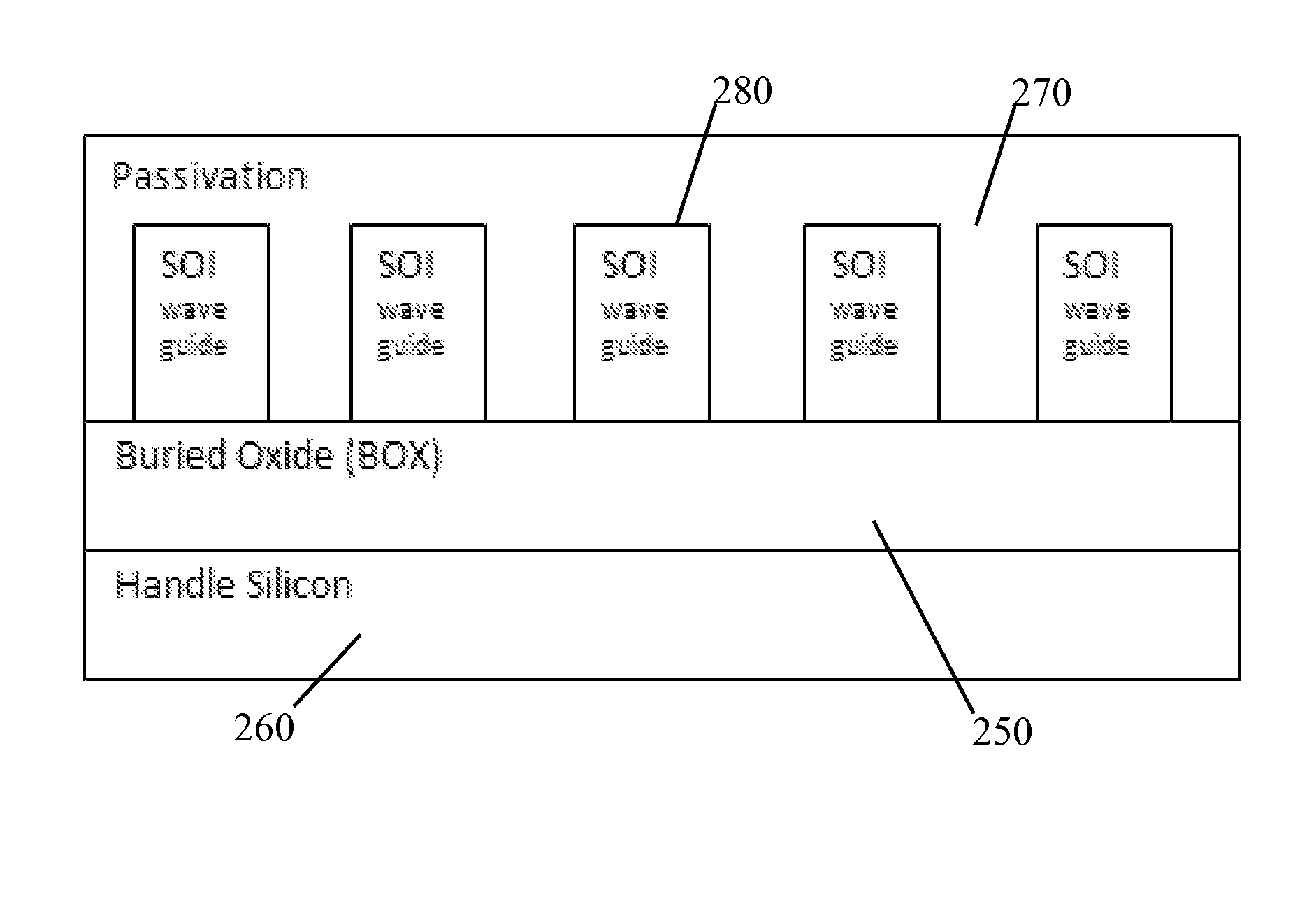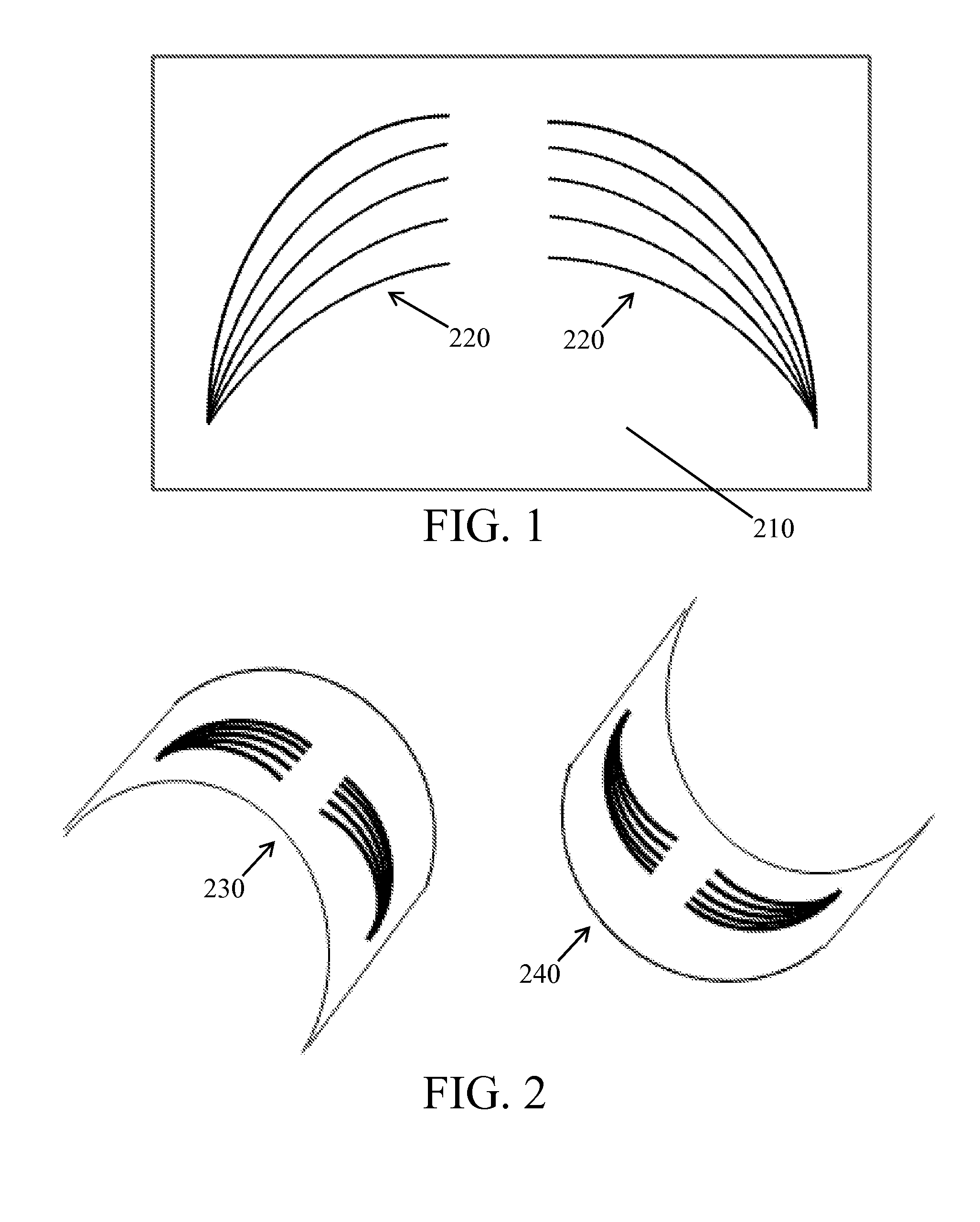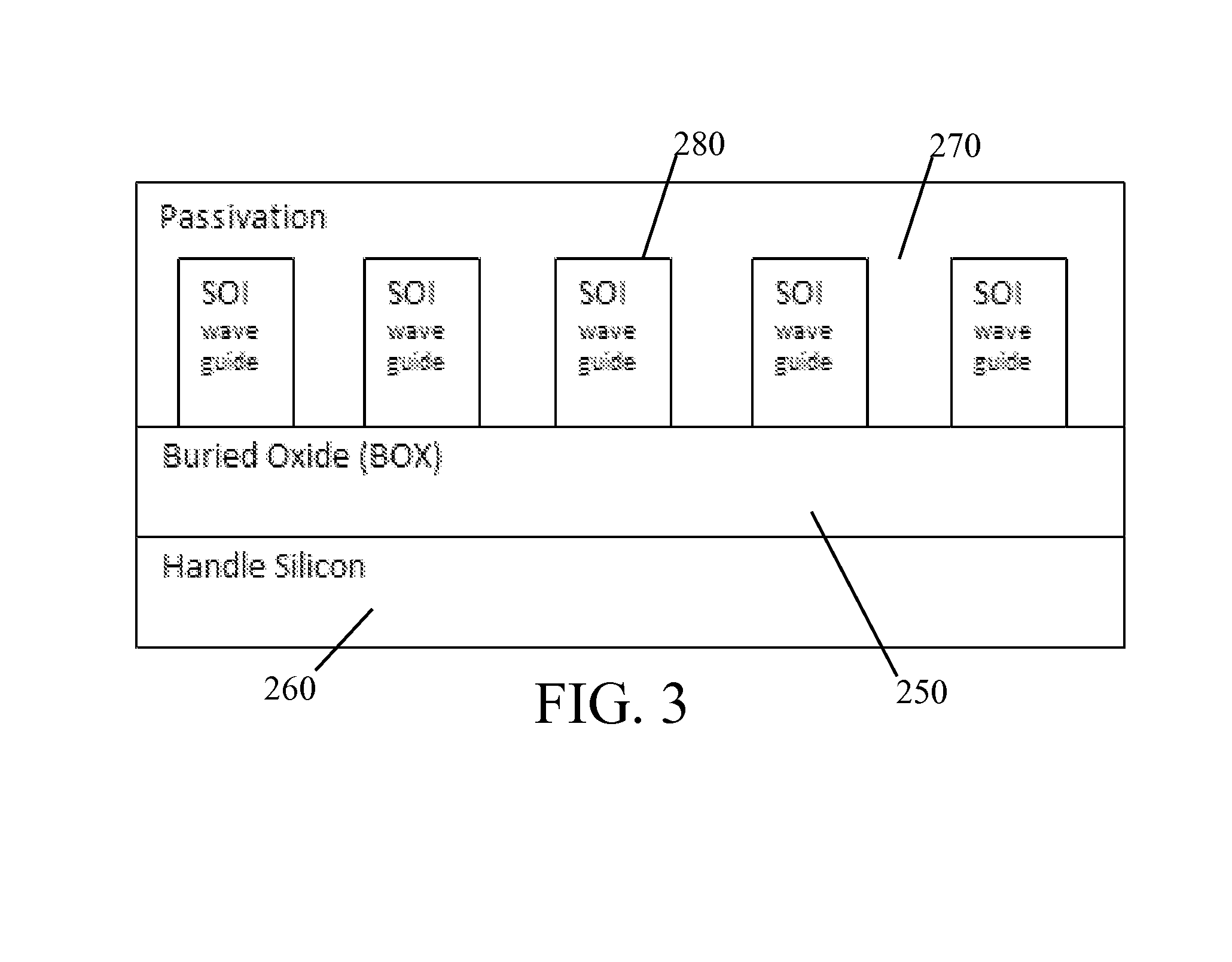Flexible 3-D Photonic Device
a photonic device and flexible technology, applied in the field of optical waveguides, can solve the problems of limited functionality of photonic waveguides fabricated using semiconductor wafers, and achieve the effect of increasing functionality
- Summary
- Abstract
- Description
- Claims
- Application Information
AI Technical Summary
Benefits of technology
Problems solved by technology
Method used
Image
Examples
Embodiment Construction
[0021]Ultra-small geometrical silicon photonic structures have been demonstrated as photonic waveguides. Integration of these waveguides with microelectronics provides a highly integrated platform for electronic-photonic convergence. The practical achievement of this platform requires reduction of such factors as the propagation and coupling losses in the interface to external fibers. State-of-the-art technologies specially tuned to the fabrication of nanometer structures, and the fundamental propagation performance has already become a practical standard. Some passive devices, such as branches and wavelength filters, and dynamic devices based on the thermo-optic effect or carrier plasma effect have been developed by using silicon photonic wire waveguides. These waveguides also offer an efficient media for nonlinear optical functions, such as wavelength conversion. Although polarization dependence remains a serious obstacle to the practical applications of these waveguides, waveguid...
PUM
 Login to View More
Login to View More Abstract
Description
Claims
Application Information
 Login to View More
Login to View More - R&D
- Intellectual Property
- Life Sciences
- Materials
- Tech Scout
- Unparalleled Data Quality
- Higher Quality Content
- 60% Fewer Hallucinations
Browse by: Latest US Patents, China's latest patents, Technical Efficacy Thesaurus, Application Domain, Technology Topic, Popular Technical Reports.
© 2025 PatSnap. All rights reserved.Legal|Privacy policy|Modern Slavery Act Transparency Statement|Sitemap|About US| Contact US: help@patsnap.com



